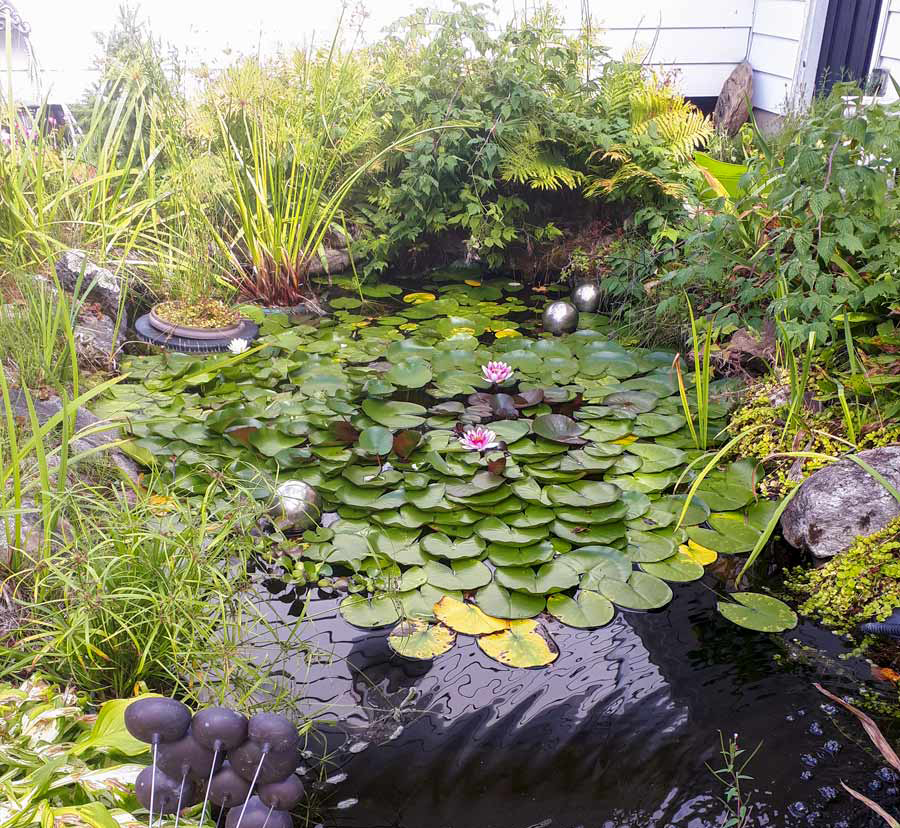HILLSBURGH – I have been fascinated with water gardening and water features for as long as I can remember. Water plants are interesting and easy to manage.
Whether the garden is an in-ground lined feature or a container on the deck, the management is relatively simple. Once installed and plants are in place, the wildlife automatically will find and inhabit the space adding movement and interest as well as sounds and insect control.
As a member of the Hillsburgh Garden Club, I was encouraged to share some of my water gardening experience.
If one expects to have perfectly clear water all year through then water gardening is not likely going to be very satisfying for you. However, if you are prepared to see the ongoing changes that nature provides throughout the year and learn some of the basics of water culture, then each day will bring new delights in your water garden.
The expense of a pump is not necessary to keep a relatively clear water environment if the balance of plants is maintained properly. Even in a small water container on a deck, there are three types of plants required for success. They are oxygenators, marginals and floating plants.
Each genre has its own unique method of maintaining the balance. When the correct balance is achieved, both flora and fauna will thrive and the water will keep a clear and pleasing appearance.
Oxygenators are plants which create extra oxygen in the water. The oxygen helps prevent algae growth and provides much needed O2 for any fish that may be inhabiting your garden.
Some of these plants are hardy and native to Ontario so they can survive year after year. Hornwort, which can be found in many streams, can be thrown in and does not require planting in soil. Saggitaria and bacopa should be planted in a heavy clay soil covered with pebbles and placed in the bottom.
Marginal plants reside in the shallow water at the edges or shelves of the garden. The roots of these plants assist in filtering the water. Marsh marigolds, water iris, and bulrushes are a few native species which can be planted and placed along the shallow edges. There are many beautiful marginal plants which provide spectacular colour throughout the season. Some are hardy while some available at certain suppliers, are tropical.
Floating plants are the most popular and provide much needed shade for the water. The shade keeps the water cooler and helps prevent algae bloom. Floating plants include water lilies, water hyacinths and duckweed.
Water lilies require planting in a large container in a heavy clay soil, although there are dwarf varieties available for small containers. They require heavy feeding of fertilizer and lots of sunlight to get maximum bloom.
Water hyacinths require no planting and will bloom with a lovely hyacinth–like flower in hot sunny weather. They will soon spread out and cover much of the surface area providing shade and wonderful roots for baby goldfish.
There are so many aspects to water gardening and I have just rippled the surface. Pond designs, fountains, waterfalls, fish and tropical plants are all more in depth studies.
The best part about water gardening is it never needs watering!
June Switzer has been a member of the Hillsburgh Gardening Club for three years. She can be reached at jswitzer@sentex.net.




